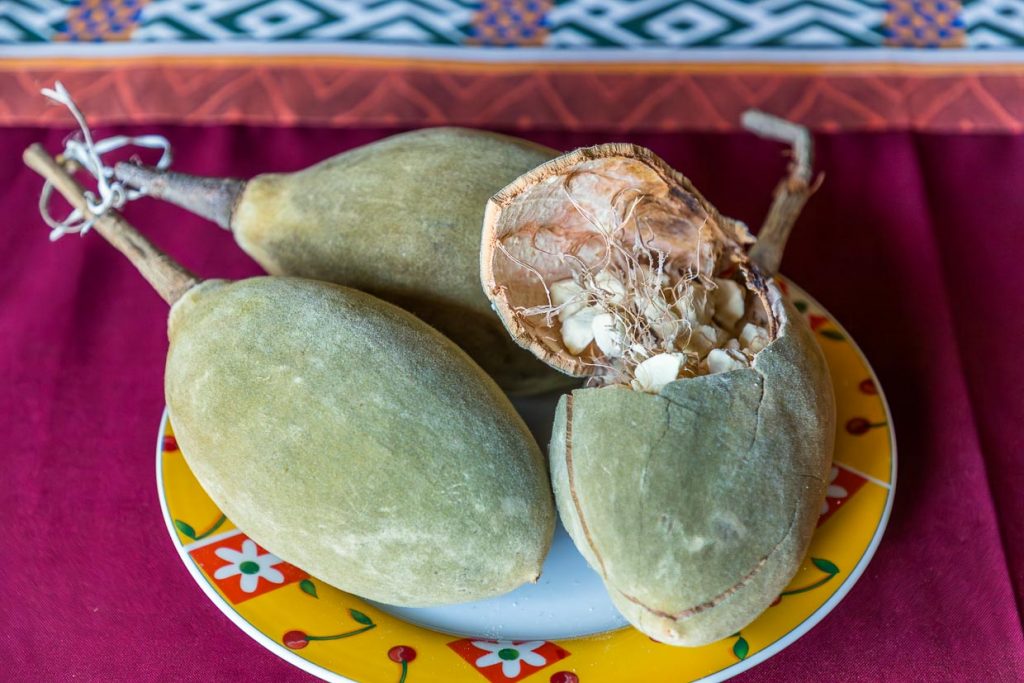It stands out, its trunk is mighty and unusually wide, like a single giant elephant leg. The baobab tree, also called baobab tree, we see again and again on our journey through Malawi. It is a gathering place in villages, standing on the bluffs of Lake Malawi, the floodplains of the Shire River, or along dusty roads. Its trunk serves as a water reservoir for the elephants in the dry season, its fruits are vitamin bombs and with its seeds the Malawis play their popular boabab game. Interesting facts about an icon of the savannah.

It is the beginning of May. In Malawi, the rainy season has just ended. There has been an unusual amount of rain. 100 days of rain without a break, and parts of the country were ravaged by Cyclone Freddy, which did not weaken on land as usual, but kept moving out to sea, gathering strength and returning to land with destructive force. Freddy destroyed houses and bridges. People lost their lives. At Lake Malawi, Africa’s third-largest lake, the beach disappears in many places, so high is the water after the 2023 rainy season. The Shire River overflows its banks. Baobabs near the water still have leaves. Baobabs in the dry hinterland are already bare.

The fruits of the baobabs are harvested by the village communities. There are no plantation trees. A baobab can live for several thousand years. However, it takes at least 20 years before it bears its first fruit. The oldest specimen is in Zimbabwe and is estimated to be 2450 years old. Because the baobab stores large amounts of water, it can produce nutritious fruit even in the driest years. In Malawi, it is considered the tree of life.


The fruits have a velvety skin and are surprisingly light in the hand. If it didn’t rustle and rattle when you shake them, you might think they were hollow and empty. Their shell is thick and sturdy. Only with a tool or if you throw them hard on the ground, cracks appear and you can break open the fruit. White, feathery lumps emerge. Each seed is surrounded by dried pulp. You can pop the clumps in your mouth like drops. They taste pleasantly sweet and sour, are full of vitamins and minerals, and are particularly rich in potassium, iron, and vitamin C. At the many street markets in rural areas, you can get the whole fruit. In the bigger cities like Lilongwe or Blantyre you can also buy the powder.



Animals help with the spread of baobabs. For them, the hard shell is no problem. After the seeds have passed the digestive tract of an elephant, they are widely dispersed. Baobabs are said to have existed more than 200 million years ago, at the time of the dinosaurs. Which brings us back to the first impression, the resemblance to the leg of an elephant or dinosaur?

The research trip was supported in Malawi by the Ministry of Tourism

